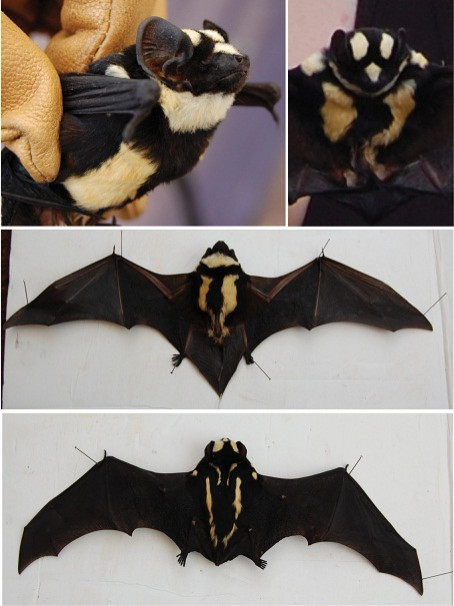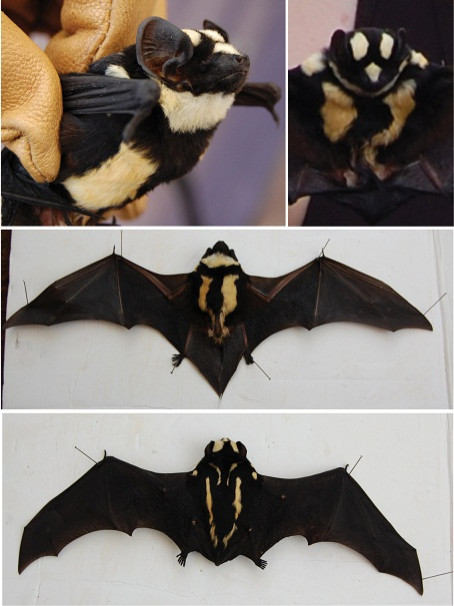New Bat With Panda-Like Markings Found In South Sudan [PHOTOS]
Scientists stumbled upon a new kind of bat at the Bangangai Game Reserve in South Sudan that’s so different from anything previously discovered, it gets its own new genus (the next level up from species).

Researchers from Bucknell University in Pennsylvania, the Smithsonian Instituion and the Islamic University in Uganda showcased the bat, Niumbaha superba, in the journal Zookeys.

This specimen has markings that might put you in mind of a badger, a panda, or cookies n’ cream. The bat also has a distinctive ear shape, longer wingtips and skull, and bigger teeth than some of the other local bats.
The new genus name, Niumbaha, means “rare” or “unusual in Zande, one of the local languages in South Sudan.
Though bats are often the stuff of horror stories, and supposedly scary enough to make a young Bruce Wayne quake in fright, they’re pretty adorable animals up close. Chiropterans aren’t nearly as scary as vampire stories make them out to be.

Take the fruit bat -- which actually refers to a large group of bats, the suborder Megachiroptera. Their pointy faces and big ears earned them their nickname, the “flying foxes.” They differ from their tinier cousins in that they do not use echolocation to navigate (except for one species, the Egyptian fruit bat). Instead, they rely on their large eyes and sense of smell to guide them. And yes, they eat fruit.
They’re also fairly generous in the bedroom (bedbranch? Bedcave?). Scientists have documented the practice of fellatio in both genders.

The common pipistrellus is a familiar bat in Britain, and is the smallest bat in Europe, getting as little as 1.4 inches long.
But the award for smallest bat goes to the Kitti’s hog-nosed bat, or the bumblebee bat, which by some yardsticks is the world’s smallest mammal.

A slightly goofier specimen is the brown long-eared bat (Plecotus auritus), found throughout Europe. This bat’s rabbit-like ears are almost as long as its body!
Sadly, many bats in the U.S. these days are falling prey to a fungal infection called white nose syndrome. The disease is still poorly understood, and there's no available treatment at this time.

© Copyright IBTimes 2024. All rights reserved.





















